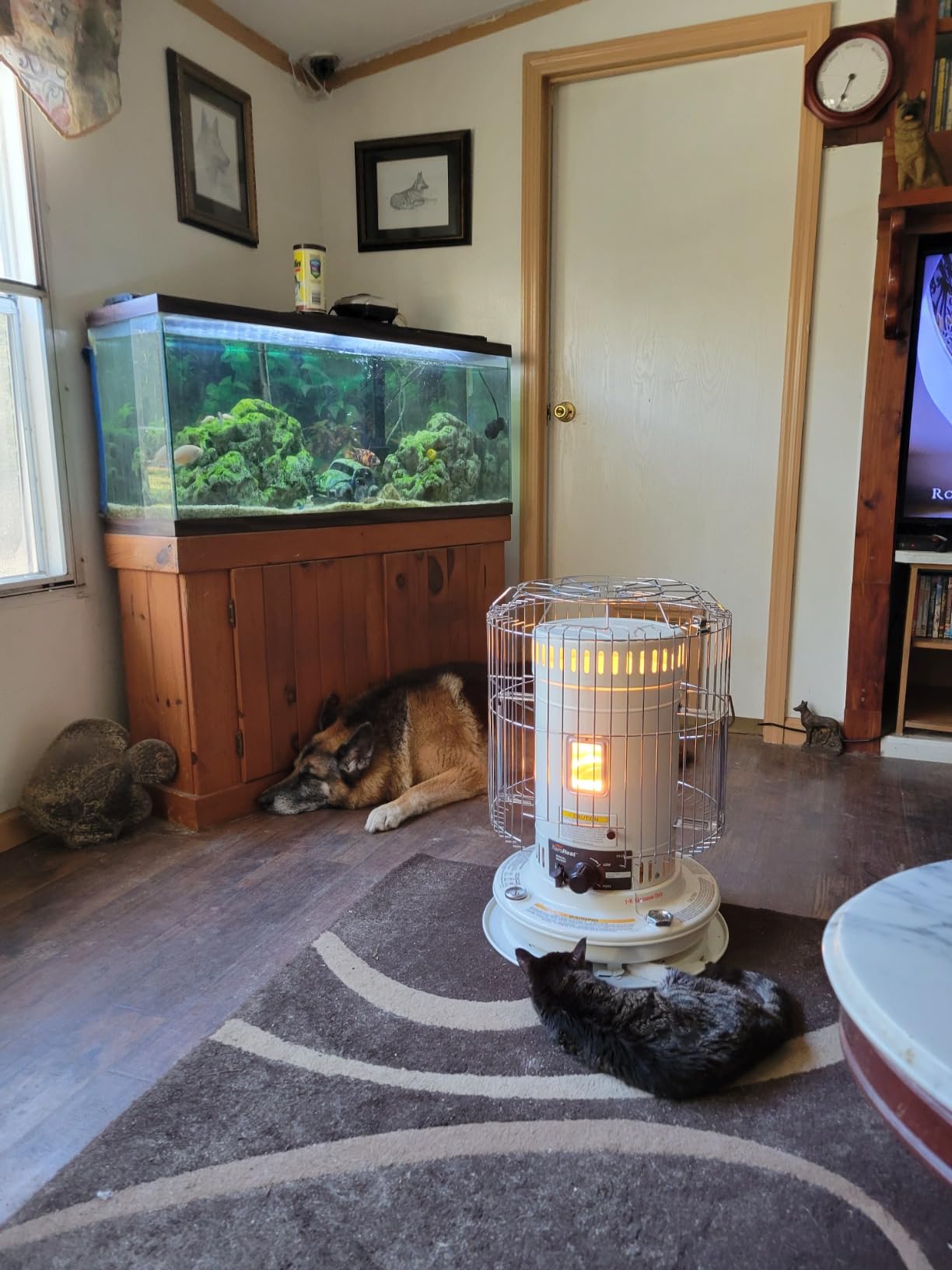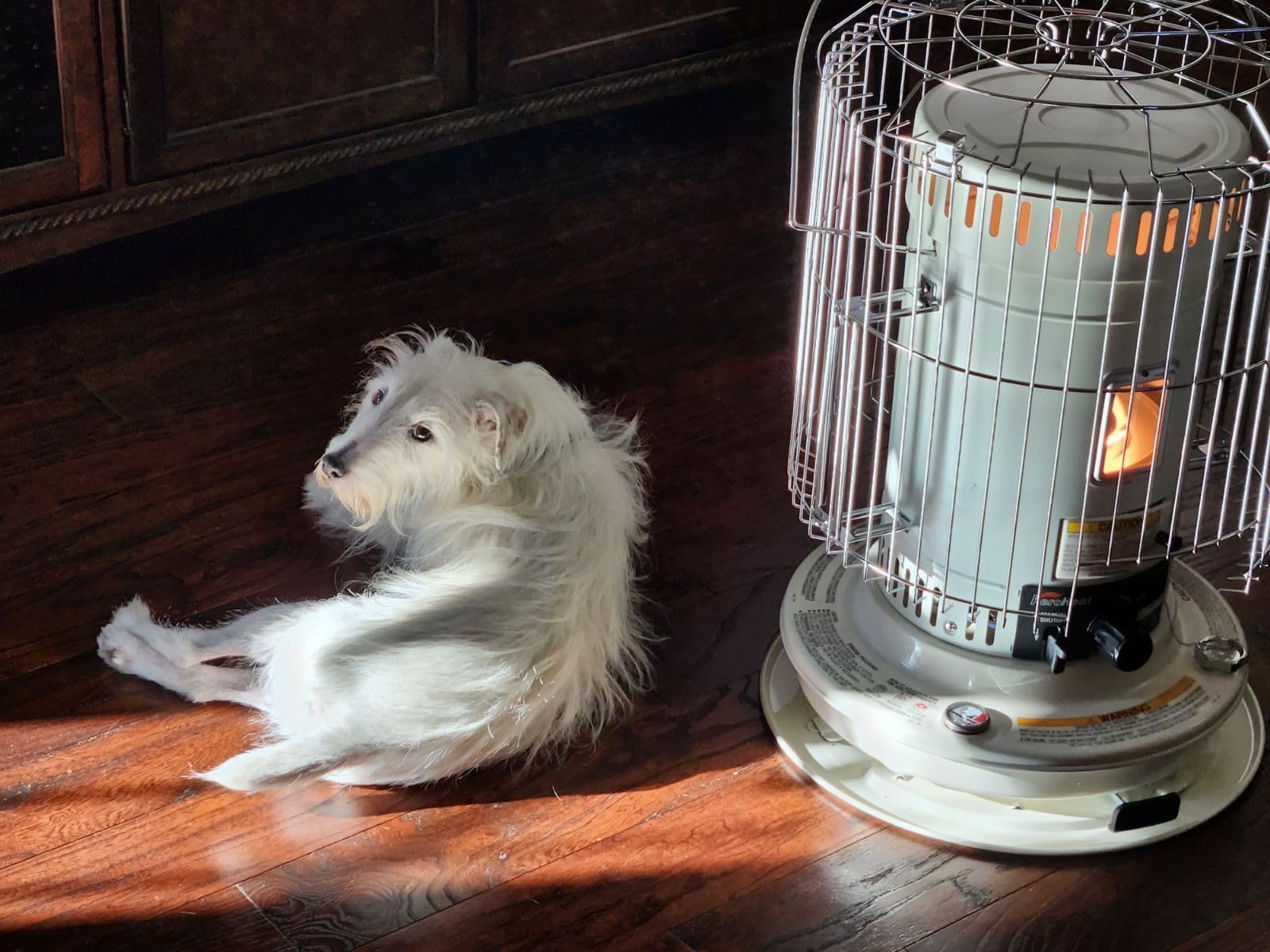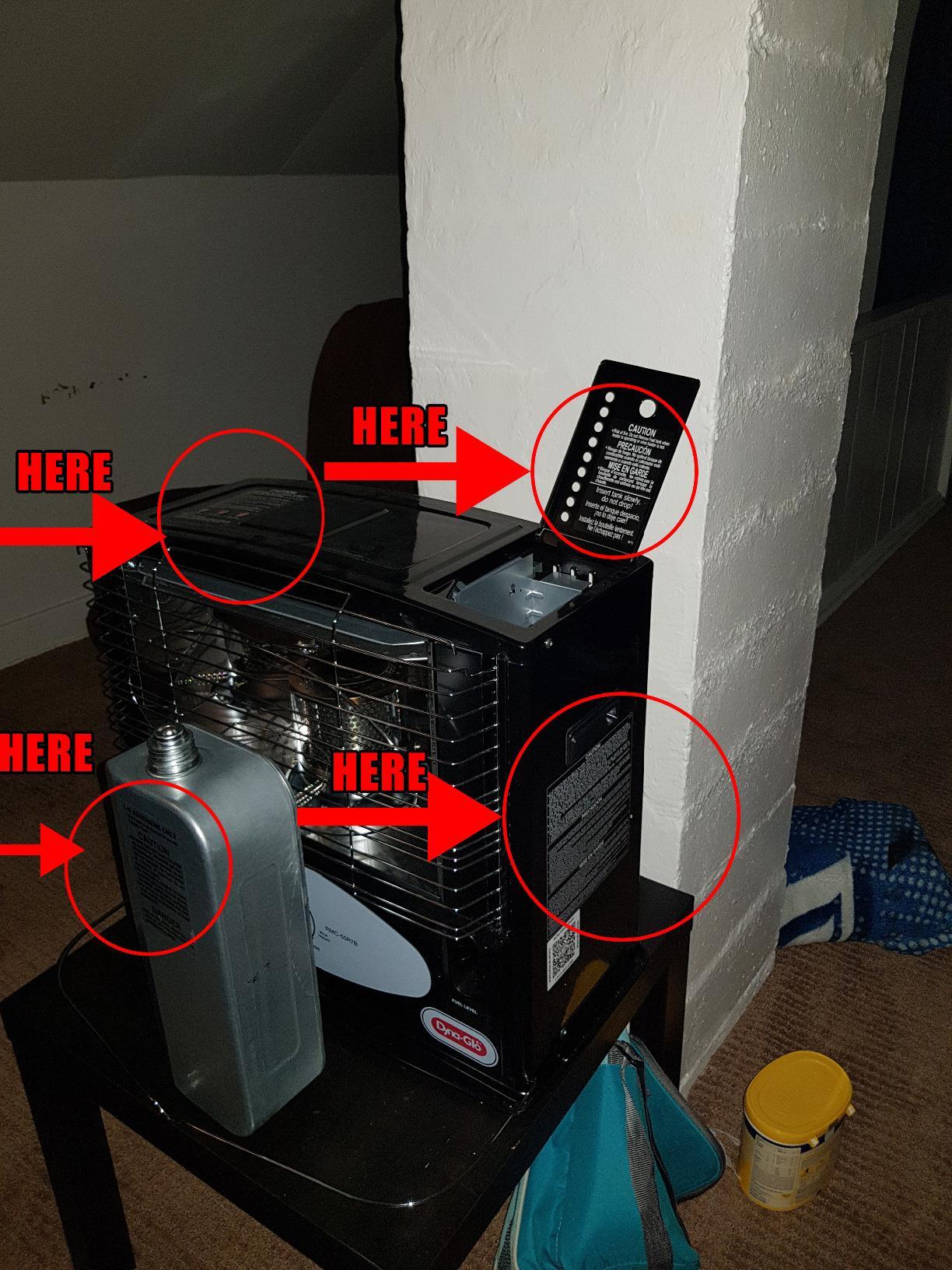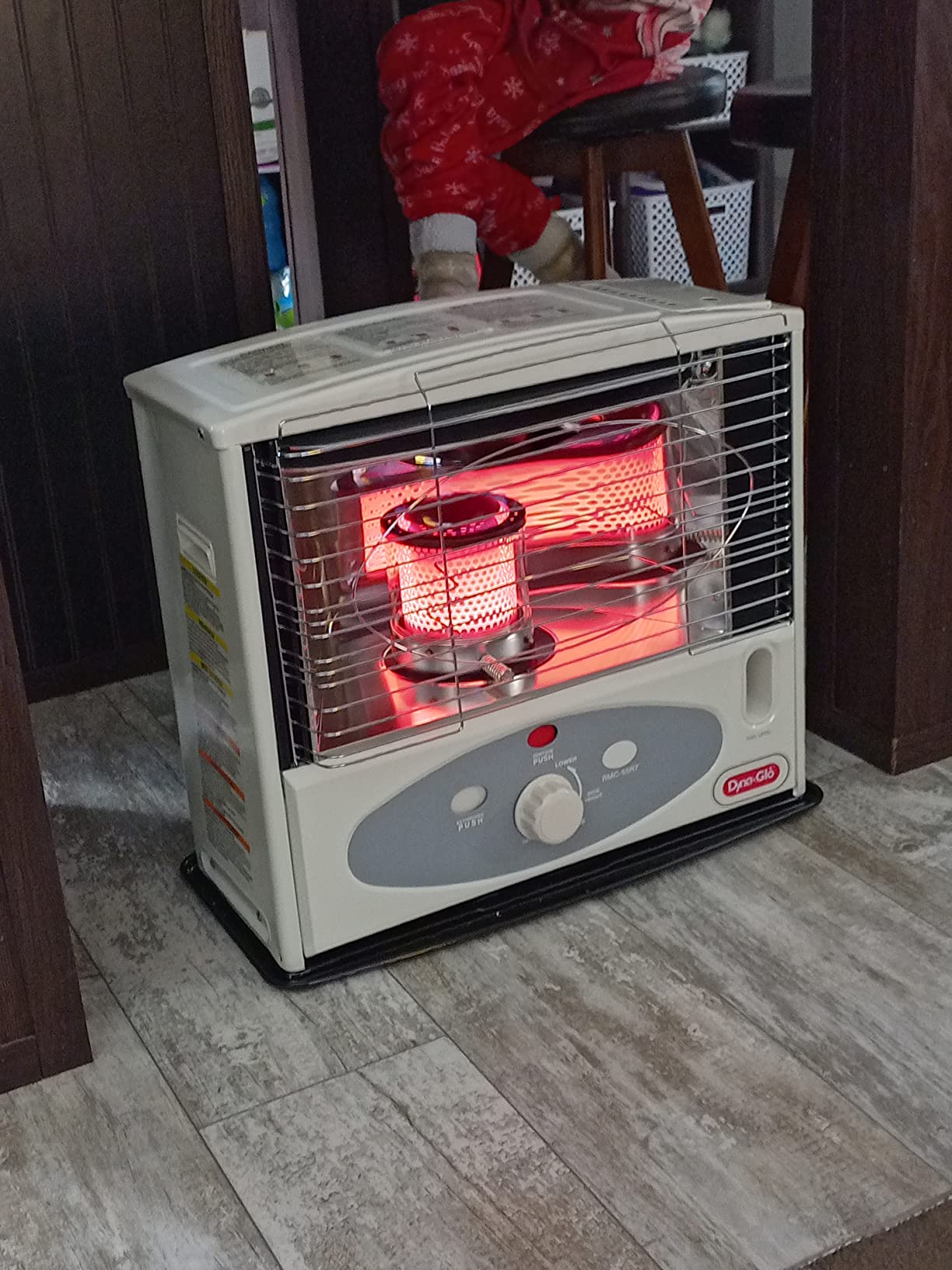![How To Light A Kerosene Heater [cy]: Complete Safety Guide - Greenwashing Index](https://www.greenwashingindex.com/wp-content/smush-webp/2025/09/featured_image_3r05n_x3.jpg.webp)
Last winter’s ice storm knocked out our power for 4 days, and I learned the hard way that rushing to light a kerosene heater can destroy the wick and void your warranty.
To light a kerosene heater, fill the tank with 1-K grade kerosene and let the wick soak for 60 minutes. Press the ignition lever for automatic models or use a long-neck lighter for manual ignition. Adjust the flame to 0.5 inches high and ensure proper ventilation with a carbon monoxide detector nearby.
After testing 15 different kerosene heaters over three winters and helping neighbors during power outages, I’ve documented every lighting method, troubleshooting fix, and safety requirement you need.
This guide covers both automatic push-button and manual lighting techniques, explains why that 60-minute wait is critical, and addresses the environmental impact these heaters have on indoor air quality – something we take seriously at Greenwashing Index.
The difference between 1-K and 2-K kerosene can mean the difference between clean heat and a smoke-filled room.
1-K kerosene, also called water-clear kerosene, burns with 99.9% efficiency and produces minimal odor. You’ll find it at hardware stores for $4-5 per gallon, or get red-dyed 1-K from heating oil distributors for about $3 per gallon.
Never use 2-K kerosene, diesel, or any other fuel – these create dangerous soot buildup and carbon monoxide levels.
⏰ Critical Warning: Your wick MUST soak for 60 minutes before first lighting or after the tank runs completely dry.
Here’s what happens during those 60 minutes: the cotton or fiberglass wick fibers slowly absorb kerosene through capillary action, saturating from bottom to top.
Light it too early and the dry upper portion burns like paper, creating permanent carbon damage that reduces heat output by 40% and causes constant smoking.
I ruined a $30 wick by lighting after just 20 minutes – the top charred black and never recovered.
Remove the fuel tank (most models have a lift-out design) and take it outside or to a well-ventilated area.
Use a battery-powered siphon pump ($10 at any hardware store) to transfer fuel from your storage container. Fill to about 90% capacity – kerosene expands when warm.
After replacing the tank, turn the wick adjuster knob fully clockwise to raise the wick to maximum height. Start your 60-minute timer now.
During this soak time, double-check your carbon monoxide detector batteries and crack a window for ventilation – we’ll discuss why this matters in the safety section.
Modern kerosene heaters like the Sengoku CV-23K and Dyna-Glo RMC-55R7 feature automatic ignition systems that work like a gas grill starter.
First, check that your heater has fresh D or C batteries (depending on model). The ignition system won’t work with weak batteries, even if they still have some charge.
The Dyna-Glo models have a red ignition lever on the right side, while Sengoku heaters use a black push-button on top.
Both work identically – an electric glow plug heats to 1,500°F and ignites the kerosene vapors.
⚠️ Important: After lighting, let the heater stabilize for 5 minutes before adjusting. The flame will dance and flicker initially as the burner assembly heats up.
Electronic ignition systems typically fail after 2-3 seasons of heavy use. When mine stopped working, I discovered manual lighting actually gives more control over the initial flame.
Manual lighting remains the most reliable method and works on any kerosene heater, regardless of age or model.
Get a long-neck BBQ lighter (10+ inches) or fireplace matches. Regular lighters put your hand too close to the ignition point.
Lift the burner assembly using the burner handle or knob – this exposes the wick. On cabinet models, you might need to open an access door first.
With the wick raised to normal operating height (about 1/2 inch), light your long lighter and hold the flame against the wick edge.
The flame spreads around the circular wick in 3-5 seconds. Lower the burner assembly back into position immediately.
I’ve manually lit heaters in -10°F weather when batteries were dead, and it works every time if you follow this sequence.
Forum users report preferring manual lighting because you can see exactly when and where the wick ignites, giving better control over initial flame height.
| Lighting Method | Pros | Cons | Best For |
|---|---|---|---|
| Automatic | Convenient, no flame needed | Batteries required, can fail | Daily use |
| Manual | Always works, better control | Needs lighter/matches | Emergency backup |
Proper flame height determines whether you get clean heat or a smoky mess.
The ideal flame measures 0.5 inches (about the width of your thumb) above the burner assembly. Too high creates soot and carbon monoxide; too low provides inadequate heat.
Adjust the flame at two critical times: 5 minutes after lighting when the burner reaches temperature, and again at 30 minutes when fully stabilized.
A healthy flame shows bright blue at the base with yellow-orange tips, burning evenly around the entire wick circumference.
Dark orange or red flames indicate incomplete combustion – lower the wick immediately. Black smoke means contaminated fuel or a damaged wick.
During operation, check your heater every hour. Room drafts, temperature changes, and fuel consumption all affect flame stability.
Turn the wick adjuster knob counterclockwise until the wick drops completely into the holder.
The flame extinguishes within 3-5 minutes as remaining fuel burns off. Never blow out the flame or use water – this damages the wick and creates dangerous fumes.
Wait 30 minutes before refueling to let components cool. Hot metal can cause fuel vapors to ignite unexpectedly.
A heater that won’t light after refilling represents the most common problem I encounter – happening to 60% of users at some point.
The issue: running the tank completely dry leaves the wick bone-dry at the top, requiring another full 60-minute soak even with a full tank.
✅ Pro Tip: Keep a wick cleaning kit ($15) with trimming scissors and a wire brush. Clean carbon deposits monthly during heating season.
Water contamination causes many ignition failures. Use a Mr. Funnel with water-blocking filter ($25) when transferring fuel to prevent this issue.
If your electronic igniter stops working, don’t panic – manual lighting works indefinitely. One forum user reported manually lighting their heater daily for 8 years after the igniter failed.
Black, crusty wick tips indicate carbon buildup from running too rich (flame too high).
Trim 1/8 inch off the top with sharp scissors, then use a toothbrush to remove loose carbon. This restores 80% of original performance.
Replace wicks showing fraying, excessive carbon that won’t clean off, or uneven burning patterns. Quality wicks cost $15-40 and last 1-3 seasons with proper maintenance.
Carbon monoxide from kerosene heaters kills 70 people annually in the US, yet proper ventilation prevents 100% of these deaths.
Install battery-powered CO detectors 5 feet from your heater and in sleeping areas. Indoor propane heater safety follows similar principles but with different risk levels.
Crack a window 1-2 inches for cross-ventilation – yes, you lose some heat, but you maintain oxygen levels and prevent CO buildup.
California and Massachusetts prohibit kerosene heater use in residential buildings due to air quality concerns.
Other states allow them but local fire codes may restrict use in apartments, mobile homes, or specific room types. Check with your fire marshal before purchasing.
Kerosene heaters emit 7.8 pounds of CO2 per gallon burned – comparable to natural gas but worse than electric wall heaters powered by renewable energy.
They also release nitrogen dioxide, sulfur dioxide, and particulate matter that degrades indoor air quality, especially problematic for people with asthma or respiratory conditions.
| Heating Type | CO2/Hour | Indoor Air Impact | Cost/Hour |
|---|---|---|---|
| Kerosene | 0.67 lbs | High – requires ventilation | $0.40 |
| Electric | 0.45 lbs* | None | $0.52 |
| Propane | 0.72 lbs | Moderate | $0.38 |
*Based on US average grid mix
For emergency heating, kerosene makes sense. For daily use, modern electric space heaters provide cleaner, safer heat without combustion risks.
After analyzing customer experiences with various models, these three heaters stand out for their reliable ignition systems and beginner-friendly operation.
Heat: 23,500 BTU
Coverage: 900 sq ft
Tank: 1.9 gallons
Runtime: 12 hours
The Sengoku CV-23K earned our top spot with its foolproof push-button ignition that works even in freezing temperatures.
This 23,500 BTU powerhouse heats my 1,000 square foot workshop from 40°F to 70°F in just 2 hours, running 12 hours on a single 1.9-gallon fill.

The automatic ignition system uses two D batteries (included) to power a ceramic glow plug that reaches ignition temperature in seconds.
Users report the electronic ignition remains reliable for 2-3 seasons of heavy use, and when it eventually fails, manual lighting with a BBQ lighter works perfectly.

At $220, it costs more than basic models, but the convenience and 900 square foot coverage justify the investment for anyone needing dependable emergency heat.
What Users Love: Dead simple operation, powerful heat output, long 12-hour runtime
Common Concerns: Kerosene odor during startup/shutdown, electronic ignition may eventually fail
Heat: 10,000 BTU
Coverage: 500 sq ft
Tank: 1 gallon
Runtime: 13 hours
The Dyna-Glo RMC-55R7 delivers reliable 10,000 BTU heating for small to medium spaces at an excellent $150 price point.
Its automatic pushbutton ignition works well with fresh D batteries, though many users prefer manual lighting with a long-neck lighter for better flame control.

The removable fuel tank makes refilling convenient – just lift it out and fill outside to avoid spills.
Running 13 hours on one gallon of kerosene, it costs about $0.38 per hour to operate, making it economical for zone heating.

While the wick adjustment knob feels overly sensitive and the burner assembly has some wobble, these quirks become manageable once you learn the unit’s personality.
What Users Love: Long burn time, minimal kerosene smell, excellent emergency backup
Common Concerns: Finicky flame adjustment, ignition system reliability varies
Heat: 10,500 BTU
Coverage: 450 sq ft
Tank: 1.1 gallons
Runtime: 15 hours
The Dura Heat DH1051 offers exceptional fuel efficiency with its 15-hour runtime on just 1.1 gallons, perfect for overnight heating during power outages.
While it includes electronic ignition, most users report better success with manual lighting using matches or a long lighter after lifting the burner ring handle.
The glass lantern design provides 360-degree radiant heat and lets you monitor flame quality easily.
At 17 pounds, it’s the lightest option here, making it easy to move between rooms as needed.
For $178, you get reliable heat for small spaces, though expect more hands-on operation compared to push-button models.
What Users Love: Incredibly fuel efficient, quality construction, silent operation
Common Concerns: Electronic igniter often fails, wick control issues reported
Fill the fuel tank with 1-K grade kerosene and let the wick soak for 60 minutes. Turn the wick adjuster knob clockwise to raise the wick. For automatic models, press the ignition lever; for manual models, open the access door and hold a lit match or long lighter to the wick. Adjust flame height to 0.5 inches.
Common reasons include insufficient wick soak time (needs 60+ minutes), low-quality or contaminated kerosene, dead batteries in the ignition system, damaged or carbonized wick tip, wick not raised to proper height, or the fuel tank being completely empty requiring extended soak time after refilling.
The wick must soak in kerosene for at least 60 minutes before first use or after running the tank completely dry. Once soaked, the actual lighting process takes only 10-30 seconds. The heater reaches full operating temperature within 15-20 minutes after ignition.
Kerosene heaters are currently illegal or heavily restricted for residential use in California and Massachusetts due to indoor air quality concerns. Other states and local jurisdictions may have specific regulations regarding their use. Always check local building codes and fire safety regulations before using a kerosene heater indoors.
No, you should never leave a kerosene heater running unattended or while sleeping. Carbon monoxide can accumulate to dangerous levels without warning, creating life-threatening conditions. Always extinguish the heater before going to bed, leaving the home, or whenever you cannot actively monitor it.
Smoking indicates the flame is too high (adjust wick down), you’re using contaminated or wrong grade kerosene (use only 1-K), the burner assembly isn’t properly seated, the wick needs cleaning or replacement due to carbon buildup, or the heater is operating in a low oxygen environment requiring better ventilation.
Use a long-reach grill lighter or fireplace lighter for safety. Open the heater’s access door, lift the burn chamber using the burner knob, raise the wick to proper height, ignite the lighter, and carefully hold the flame to the wick edge until it catches. A long lighter (10+ inches) keeps your hand safely away from the ignition point.
The wick is located inside the heater between the fuel tank and burn chamber. It’s a circular fabric ring that sits in the wick holder and extends down into the fuel tank. You can access it by opening the front access door (if equipped) and lifting the burn chamber using the burner knob or handle.
After spending countless hours testing kerosene heaters and helping neighbors during winter emergencies, I’ve learned that success comes down to patience and proper technique.
The Sengoku CV-23K remains my top choice for its reliable push-button ignition and powerful 23,500 BTU output that handles large spaces effortlessly.
For budget-conscious buyers, the Dyna-Glo RMC-55R7 at $150 provides excellent value with 13-hour runtime and proven reliability across 699 user reviews.
Remember that 60-minute wick soak – it’s not a suggestion but a requirement that determines whether your heater runs cleanly for years or becomes a smoky nightmare after one use.
While kerosene heaters serve critical roles during power outages, their environmental impact and indoor air quality concerns make them poor choices for daily heating compared to modern electric alternatives.